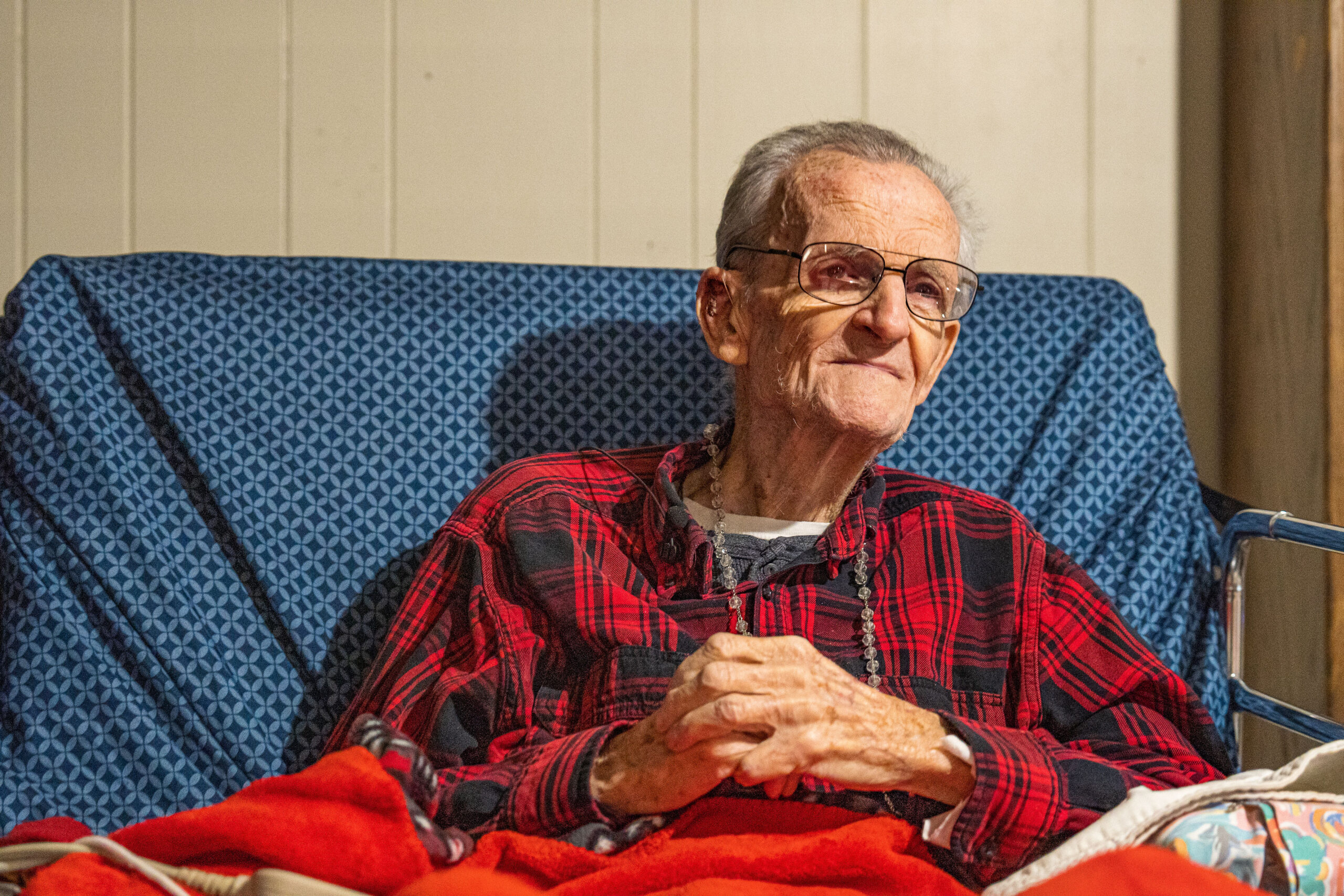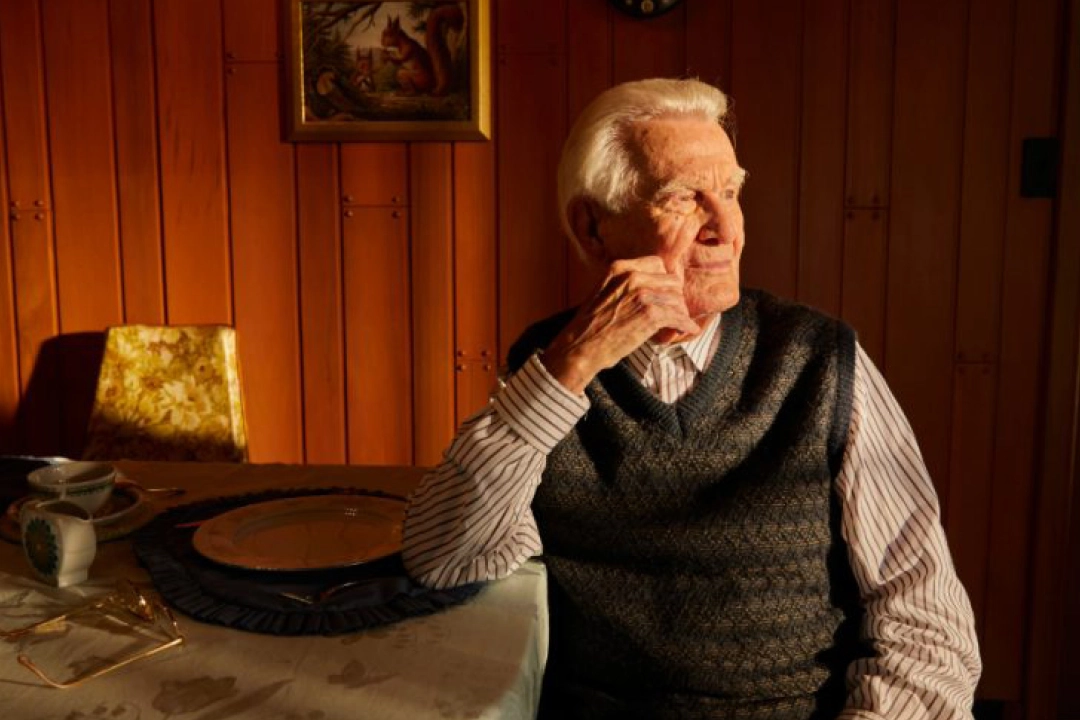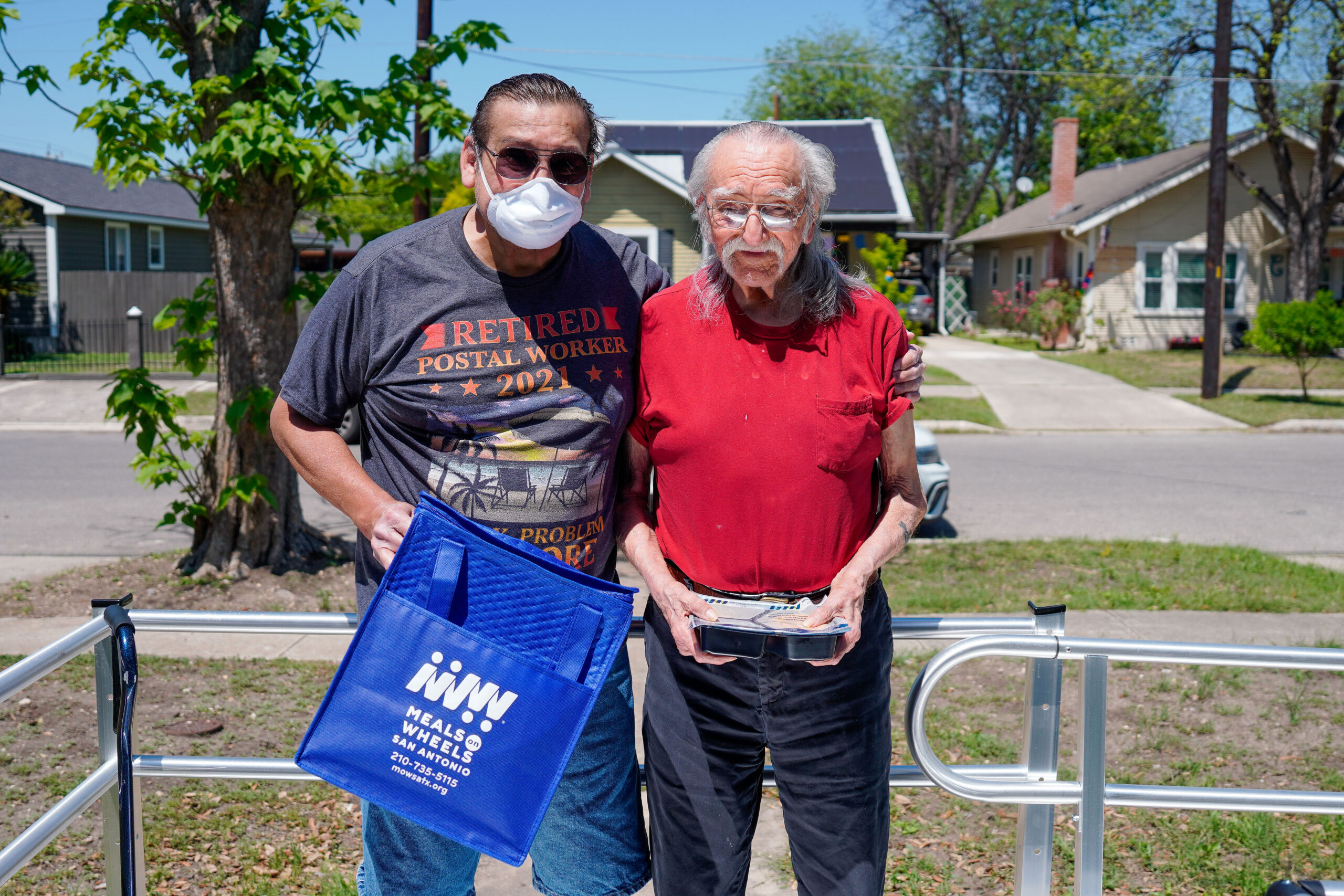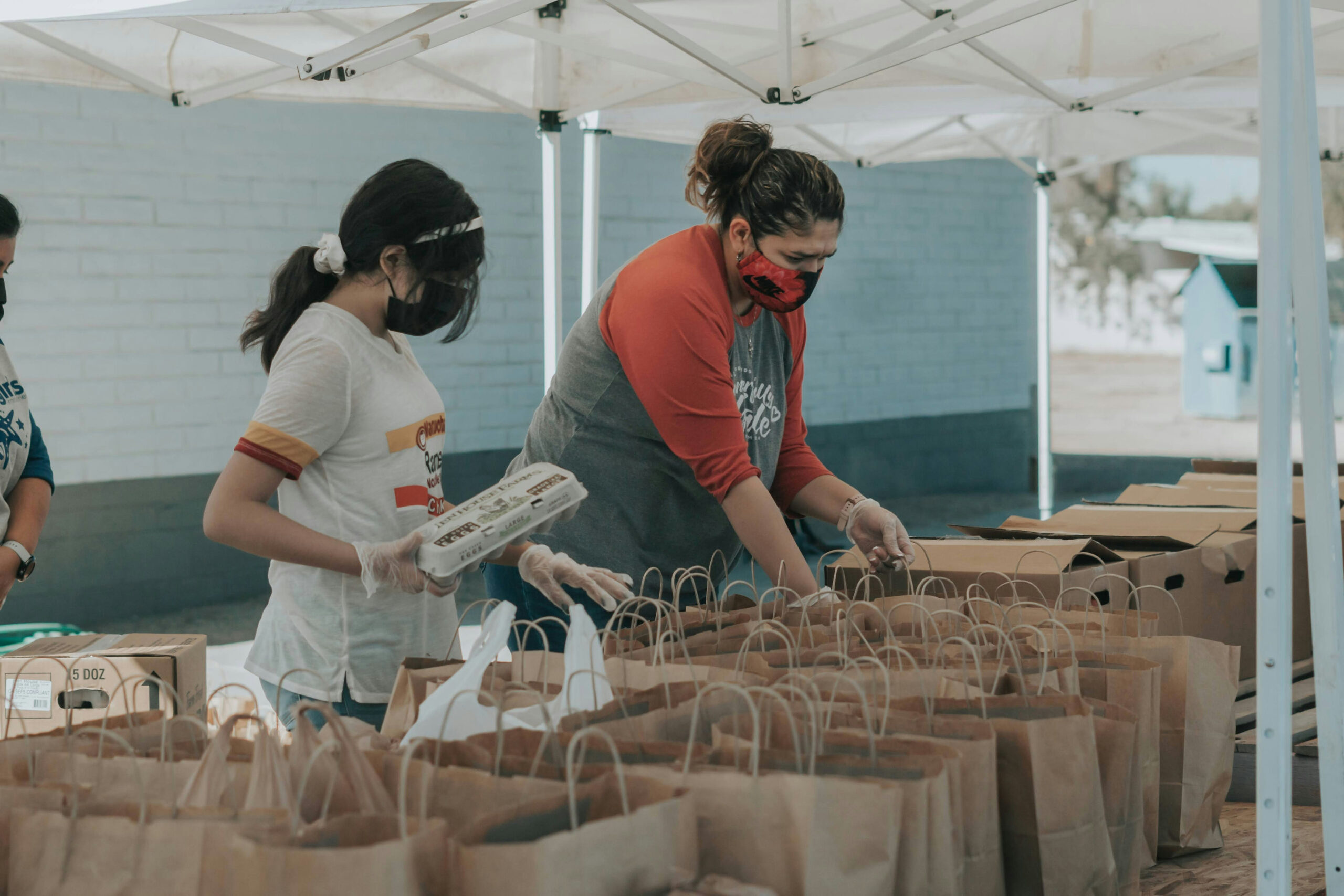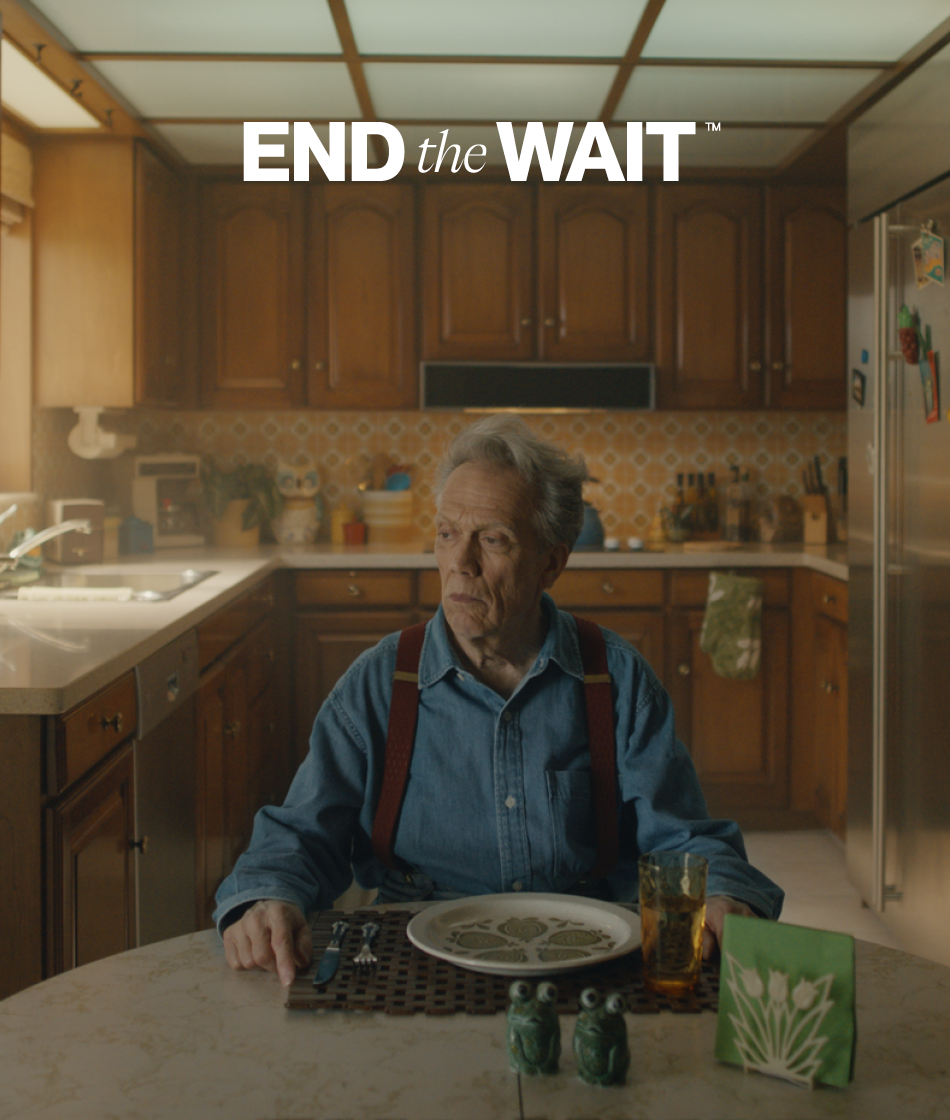Across the United States, Meals on Wheels providers are urgently grappling with extensive waitlists due to rising demand and declining federal funding. The situation is worsened by the reality that current federal funding levels only cover 37% of Meals on Wheels providers, 1% of philanthropic donations across the country go to serving seniors, and volunteerism is at its lowest in nearly two decades.
With over 12 million older adults struggling with hunger and one in three feeling lonely, the gap between need and service highlights a critical justice and equity issue that demands immediate attention. The prediction that this number will only increase as the U.S. population ages makes taking action even more urgent.
Blaming the pandemic, which had a profound impact, is easy. At the peak of COVID-19, the federal government approved an infusion of $192 billion in emergency funding, distributed to small businesses, organizations and state and local governments — many of them social services organizations — to ensure they stayed afloat.
When the funds dried up, in many cases, a budget vacuum followed.
On the surface, for service organizations, it’s a clear-cut origin story of inadequate budgets and capacity that fail to keep pace with rising needs: more resources (such as volunteers) = more service, and less resources = less service.
The “simple” solution is to scale back. However, it’s not so simple. We navigated COVID-19 only to face the fact that the demand created by emergency meal delivery has not diminished.
In reality, this flashpoint unearthed how many service organizations with missions born in food and nutrition were on the precipice of (or already in) distress.
For example, the Aroostook Agency on Aging discovered that two-thirds of the seniors they added to their Meals on Wheels recipient list during COVID met the requirements for meal delivery service under the pre-COVID rules. It was a sharp indication they had a significantly underserved population. COVID funds enabled them to meet those “hidden” needs and help seniors suffering in silence.

The year 2020 simply drew back the curtain. Now, you don’t have to look very far to see the consequences of a prolonged crisis.
There is more awareness of the vast number of seniors struggling to age in place with limited resources as inflation soars, economic inequity widens, widespread isolation among seniors occurs, and large-scale nutritional deficiencies occur.
Organizations have been wanting to do more all along.
The rising need is overwhelming local Meals on Wheels providers. Far too many providers are doing more with less and operating beyond their intended capacity. While rural communities bear the brunt of this, with more seniors living in hard-to-reach homes, providers in more urbanized areas are not immune.
A National Senior Hunger Crisis
From Birmingham, Alabama, to Raleigh, North Carolina, to Central Ohio, to San Francisco, California, to Fairbanks, Alaska, and back to Presque Isle, Maine, we’ve witnessed the tremendous impact local Meals on Wheels providers are making in the lives of seniors — better nutritional outcomes, less isolation, the opportunity to age at home longer, better connections to their community and access to individuals who support seniors in ways that go far beyond delivering meals.
Even the most resource-rich providers, such as the San Francisco Meals on Wheels providers that serves 5,000 individuals and delivers 2.5 million meals yearly as far out as San Mateo, 27 miles south of the Bay Area, acknowledge that there are many more people to reach and much more work to be done.
That’s an ominous sign for Meals on Wheels providers, which operate with razor-thin budgets, and the seniors in their communities.
One way providers keep hope alive for seniors is by creating waitlists that promise help. One in three Meals on Wheels providers has a waitlist, with wait times that average more than three months, though some endure waitlists that exceed two years. In one Ohio community, the active waitlist for seniors is 760 days.
It’s one of the few solutions available to aging services like Meals on Wheels for coping with systemic pressure to do more with less. However, it’s temporary and unsustainable. Without sweeping change and additional funding, it’s more like a Band-Aid.
As local providers fight for more resources to reduce and eliminate waitlists, seniors suffer — many in ways we can’t comprehend without being in the home. And there is often no end in sight.
Who Will Be There
Waitlists mean that Meals on Wheels staff and volunteers, often the first and second lines of defense for homebound seniors experiencing health challenges, aren’t there for falls, health emergencies and silent killers like social isolation and loneliness.
The question without an answer for countless Meals on Wheels providers is: if not them, then who will be there for these seniors?
“The president of the John Hartford Foundation says that health starts and ends at the kitchen table, and agencies on aging and other providers of Meals on Wheels, we are at the kitchen table,” says Joy Barressi Saucier, executive director of the Aroostook Agency on Aging in Presque Isle, Maine, which administers the local Meals on Wheels services. “We are seeing what goes on in the home. You can’t see what’s going on from someone’s mailbox. When you’re in the home, you get a different picture of what’s happening with that person.”
When Joy’s team deploys Tim Cook, their community resource specialist, he’s not just doing a home-delivered meals assessment. He’s conducting a holistic evaluation of what’s happening in their lives and what other resources they might need to be connected to to meet their needs.
Candidly, they need more Tim Cooks.
Today’s Meals on Wheels providers recognize that effective meal delivery demands more sophistication beyond ensuring seniors have reliable and steady support and the workforce to meet that demand.
Innovation In Waiting
Beyond waitlists, organizations like the Aroostook Agency on Aging are leaning into innovation mapping to solve the problem.
“It takes ingenuity and innovation to deal with these challenges,” Joy says. “We will do everything we can to innovate our way through this.”
Joy points to the agency recently undergoing innovation training to “flip these problems on their head.”
Many providers have proven that, with enough resources, they are positioned to combat what’s ailing seniors with innovative approaches, awareness-building campaigns, savvy teams of nutritionists and social workers, holistic health assessments — like the one Tim Cook provides — test kitchens to refine meals, medically tailored meal initiatives, committed volunteers and the time to seek out and shape strategic local partnerships to maximize reach.
These advancements are the future of Meals on Wheels. Scaling them might be the key to unlocking the network’s full potential.
In fact, according to Meals on Wheels America research, 64% of Meals on Wheels providers believe they could serve more seniors with more funding. The message: implementing change and innovation takes investment and broader buy-in, not just local will and a blueprint.
Sadly, transformational innovation is on the back burner for many providers.
“We’ll do everything we can; at the same time, we need our communities, our government at all levels, to say, ‘We’re in this with you, that older people are important, and older people add value to our communities,’” Joy says.
The hope is that messages like hers echo far enough until they reach individuals with the power, influence and desire to move the needle to deliver more funding for Meals on Wheels providers.
An Aging Nation
Although Meals on Wheels has been the most effective solution to senior hunger and isolation for over 50 years, there has been a constant waiting game for providers — for more government funding, donations and volunteers.
Calls for a multi-stakeholder, multi-pronged effort to change how the Meals on Wheels network and country work together to champion senior health and wellbeing — from leaders and staff working at the grassroots level — will only grow
louder as our communities age faster and need accelerates.
According to the Urban Institute, “The number of Americans ages 65 and older will more than double over the next 40 years, reaching 80 million in 2040. The number of adults ages 85 and older, who most often need help with basic personal care, will nearly quadruple between 2000 and
2040.”
This math alone should sound the alarm. The alternative is to risk waitlists becoming more prevalent and wait times growing longer as the need grows — and grows.
Without urgent action at scale, it is expected that 14 million seniors — almost 4.1% of the population — will be food insecure by 2030, with older adults in communities of color feeling the most impact.
Acting is the only way to keep worsening crises from becoming chaotic.
A Face To A Name: Addressing Senior Hunger
Many providers managing waitlists are forced to send disheartening messages to many seniors instead of providing nutritious meals.

“We’ve been in this situation now for a year, and I just don’t see where we come out of the waitlist,” Joy admits. “When our team members or I are in the community interacting with people, we have to look people in the eye
and say, we don’t have the money. We can’t provide this service, and we’ll keep in touch with you and try to ensure we do everything we can to help you as soon as possible.”
Joy notes that those visits put names and faces to the 275 people who are going without meal deliveries. It humanizes the numbers and figures in this real and present crisis.
Receiving the news that you’re being put on a waitlist is agonizing for homebound seniors and life-changing.
“[Meal delivery] changes their lives,” says Chris Beaulieu, Home Care and Nutrition Services director at Aroostook Agency on Aging. “Most [clients], because they can’t get to the grocery store or their health is such that
they can’t prepare meals with their stove or oven anymore, the meals make a huge difference in their lives.”
We often talk about Americans living longer and living better as they age, but, in truth, too many seniors live alone, have disabilities and can’t afford basic needs, like regular healthy meals (29% of homebound seniors suffer from food insecurity.)
And the stories behind the statistics make the need for urgency unmistakable.
Joel Roy
Joel Roy of Aroostook County is a dedicated teacher whose health challenges forced him to retire at 60. Joel suffers from osteoarthritis down his spine, among countless other ailments.
At 65 years old, he’s homebound, has given up driving and struggles to walk around the block — one of the few physical activities that help him maintain a healthier weight and lifestyle.
His family wants him to go into assisted living, but he values his independence and the comfort of the place he’s called home for five years.
Joel says Meals on Wheels is one of the main reasons he can maintain his weight, keep his walking regimen and stay home.
“I’m only 65. I still got a lot of life to go,” Joel says. “Meals on Wheels [made it easier] for me to eat healthier. It’s perfect; the portion size is perfect, and I like variety.”
When Joel initially inquired about Meals on Wheels, they put him on a waitlist, where he waited two years.
While on the waitlist, his health began to deteriorate.
“I started having medical issues beyond what I already have because my diet consisted of frozen meals you buy at the grocery store,” Joel says. “My hands were starting to cripple, and cooking became a challenge at the time. I didn’t yet have a home care worker. Well, what’s wrong with those frozen meals? After eating them for a couple of years, [because of] the salt content, my body started blowing up.”
Joel has struggled with weight his whole life. At one point, he weighed as much as 375 pounds. He’s now down to 204 pounds. The weight gain before Meals on Wheels and his lifelong vertigo, which affects his balance, were contributing factors to his falling a year and a half ago and suffering a broken shoulder.
Vertigo is a lingering issue from the Ménière’s disease he experienced in his younger years. The National Institute on Deafness and Other Communication Disorders describes Ménière’s as “a disorder of the inner ear that causes severe dizziness (vertigo), ringing in the ears (tinnitus), hearing loss and a feeling of fullness or congestion in the ear.”
The shots in his right ear are required to manage his vertigo, which also means he has lost most of the hearing in his right ear.
To say Meals on Wheels has been a life-changing presence in his life is an understatement.
“The nice thing about the Meals on Wheels is they give you flyers,” Joe says. “Sometimes it’s a word search, but sometimes it’s information. Being a former school teacher, I read those flyers, and there’s one point about [the importance of] two hours of physical activity a week.”
The flyer prompted Joel to make regular walks a goal. His short walks take him about 30-35 minutes. They are enough to keep him active and are a major part of his commitment to being more health-conscious, given his growing health issues.
It’s a perfect example of the power of Meals on Wheels, which might just prolong Joel’s life. He has every intention of enjoying the years ahead.
Imagine what would have been possible if Joel had gotten their meals sooner rather than waiting to receive potentially life-saving support.
Joel’s story amplifies the urgent and undeniable need for timely support for those still waiting. This is why we have a plan to End the Wait and ensure that every senior who needs Meals on Wheels gets it.
We know there is no time like the present to act for Joel and the thousands of seniors like him.
